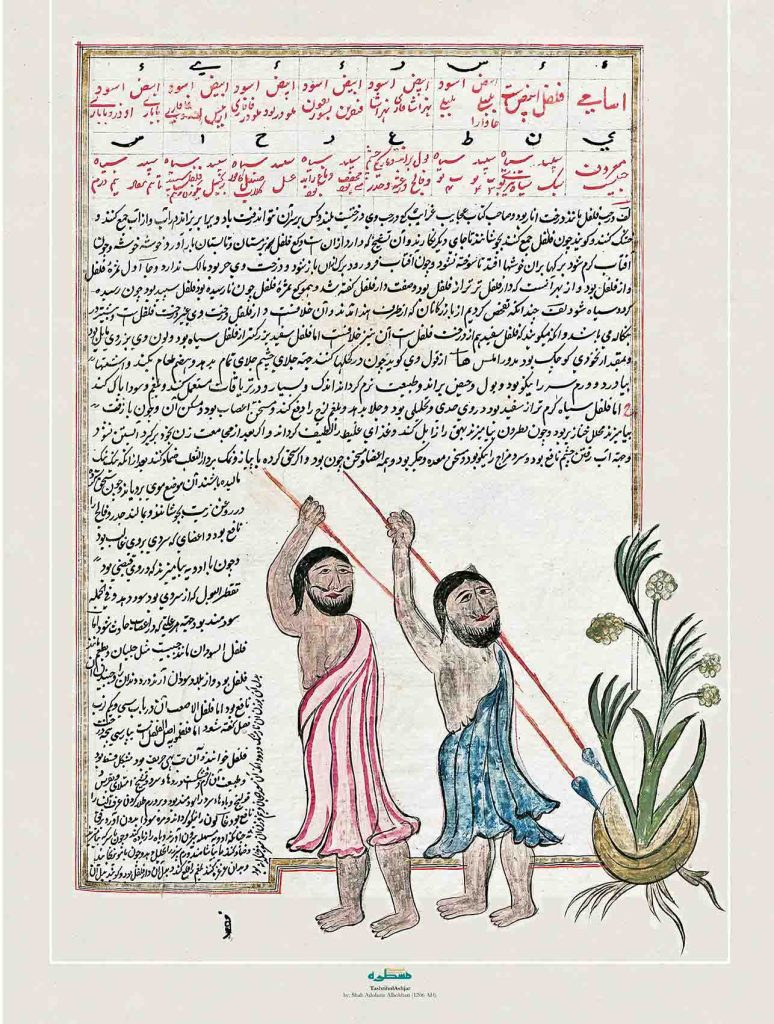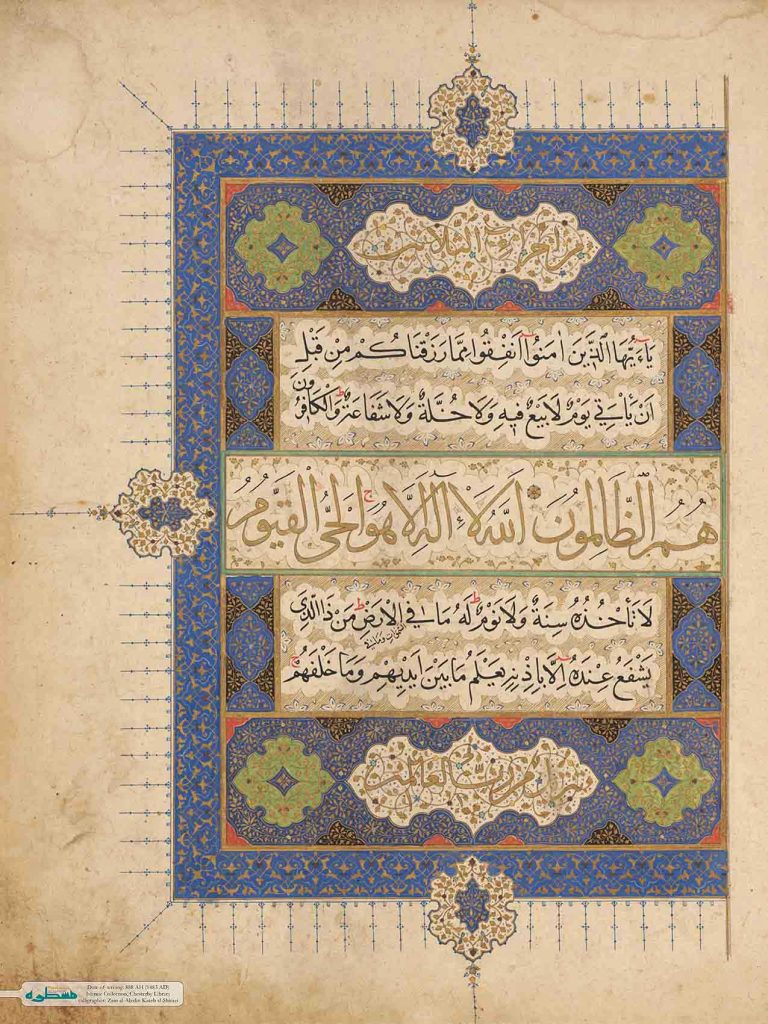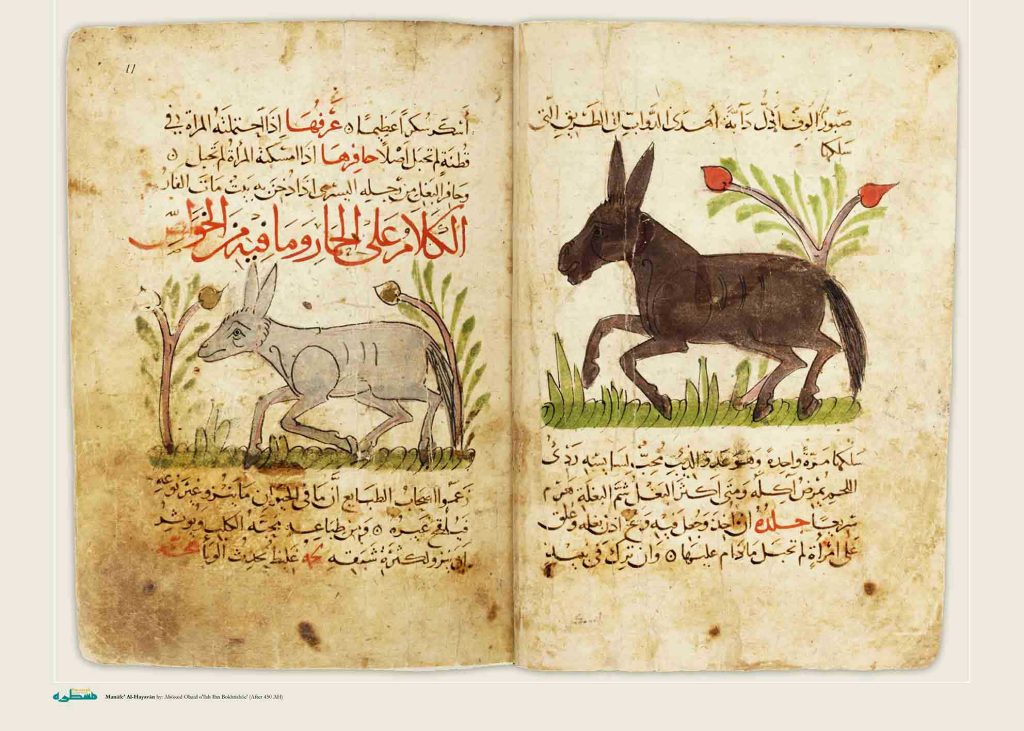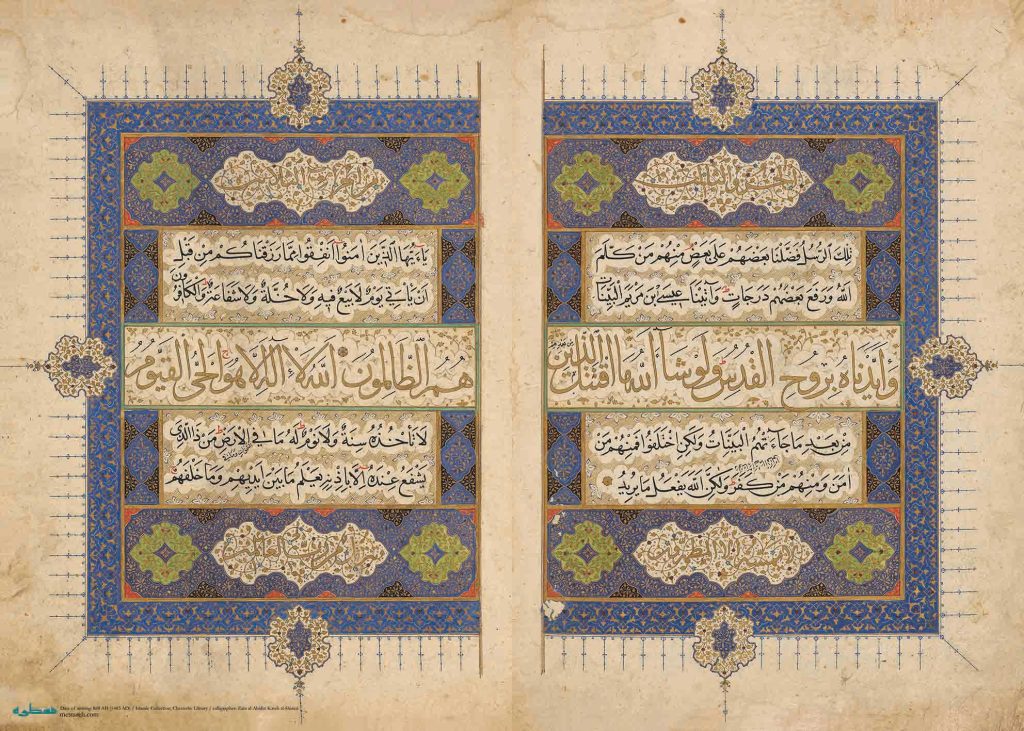The Thirtieth Juz by Ruzbihan Shirazi
Calligrapher’s name
Font type
Date of writing
Version
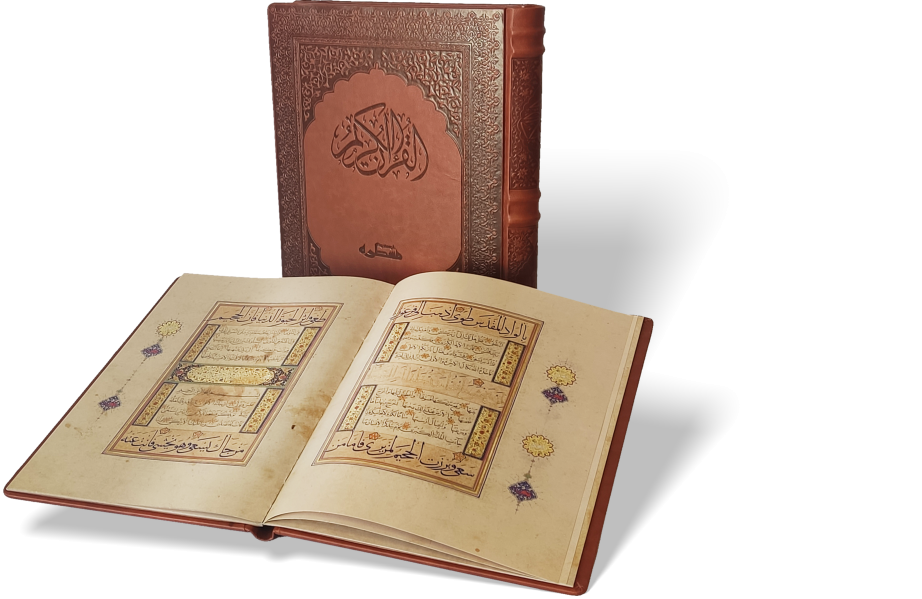
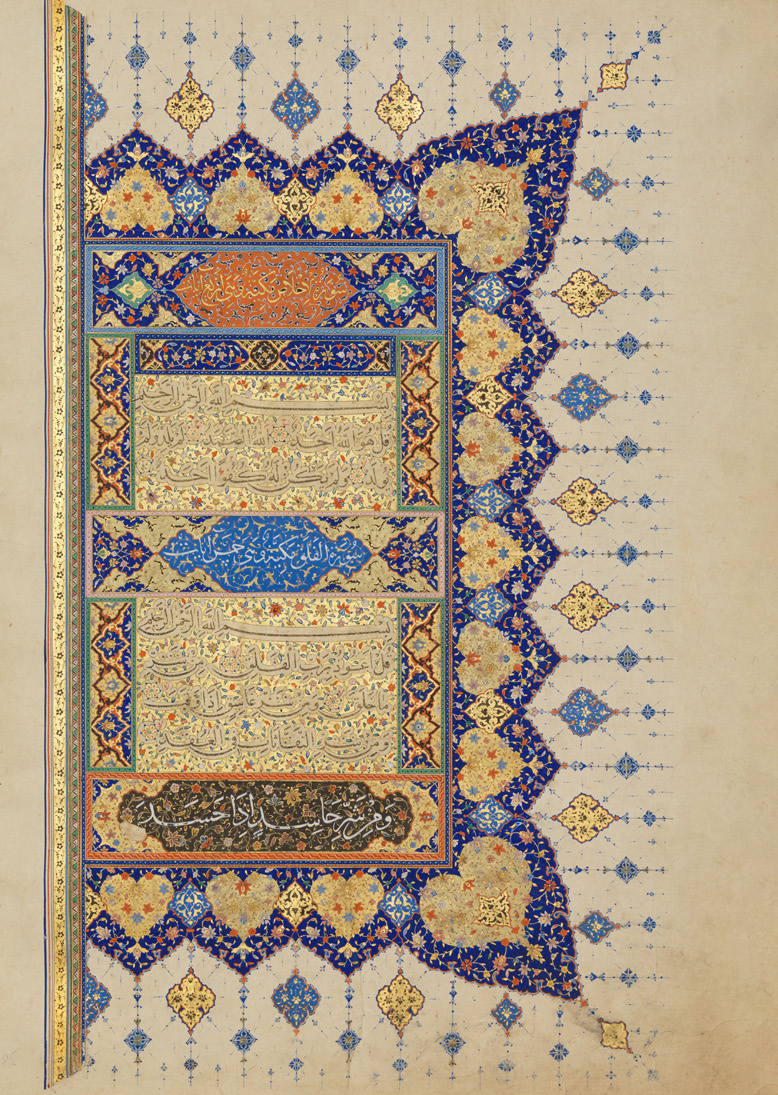
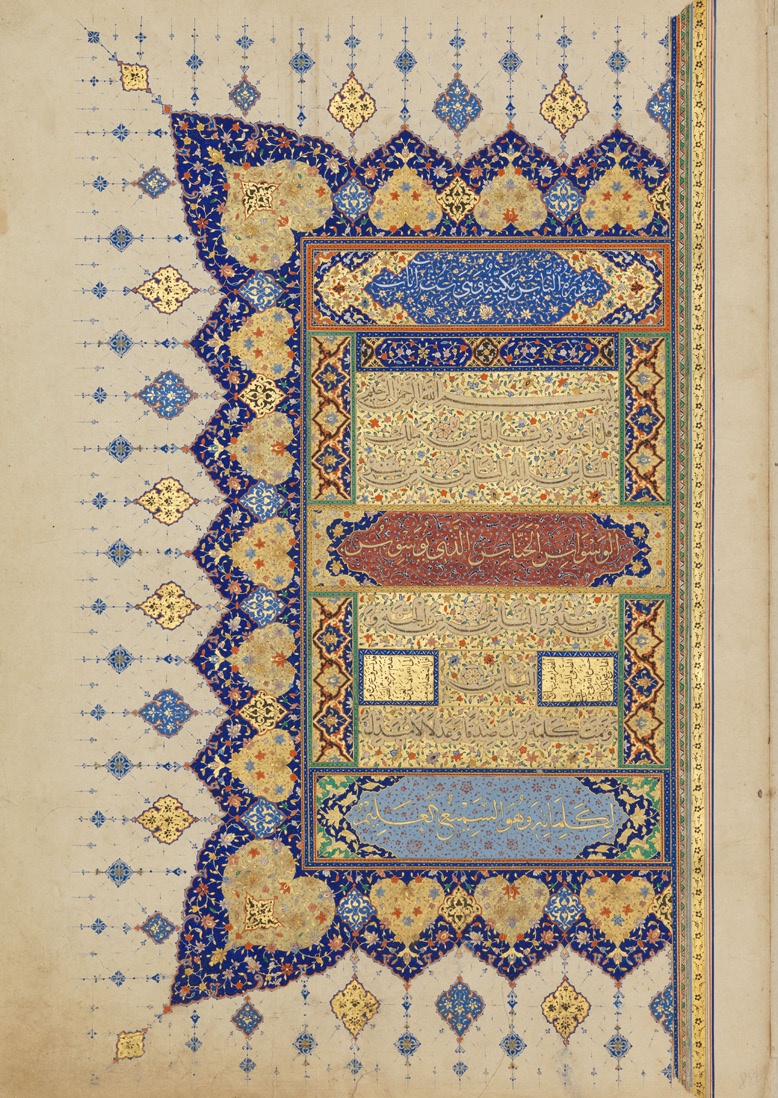
This manuscript is the thirtieth part of a complete Quran created by Rouzbehan Mohammad al-Tabai bin Naeem al-Din Shirazi, housed in the Chester Beatty Library under catalog number Is 1558. Dating back to the early 10th century AH (mid-16th century CE), this work is a distinguished example of Iranian book art. Measuring 442 by 310 millimeters, it comprises 445 folios.
According to Sheila Blair’s research, Rouzbehan Shirazi worked not in a court-affiliated workshop but within the Sufi shrines of Shiraz, collaborating with other calligraphers and artists of his time. Blair identifies this manuscript as emblematic of 10th-century Iranian Qurans, with a predominant use of the Muhaqqaq, Thuluth, and Naskh scripts. An important feature is the distinctive Iranian style of Naskh, visible in Rouzbehan’s work and that of his contemporaries, which Nairizi further developed.
The manuscript’s opening pages, featuring remarkable illumination, include Surah al-Fatihah in the Rayhani script encased within a central medallion. Rouzbehan’s innovative use of vibrant hues—red, pink, and turquoise—alongside scroll-like polychromatic arabesques showcases his mastery and artistic creativity in both illumination and calligraphy.
اشتراک گذاری :
Form is loading
Please Wait
Easy Form Builder

